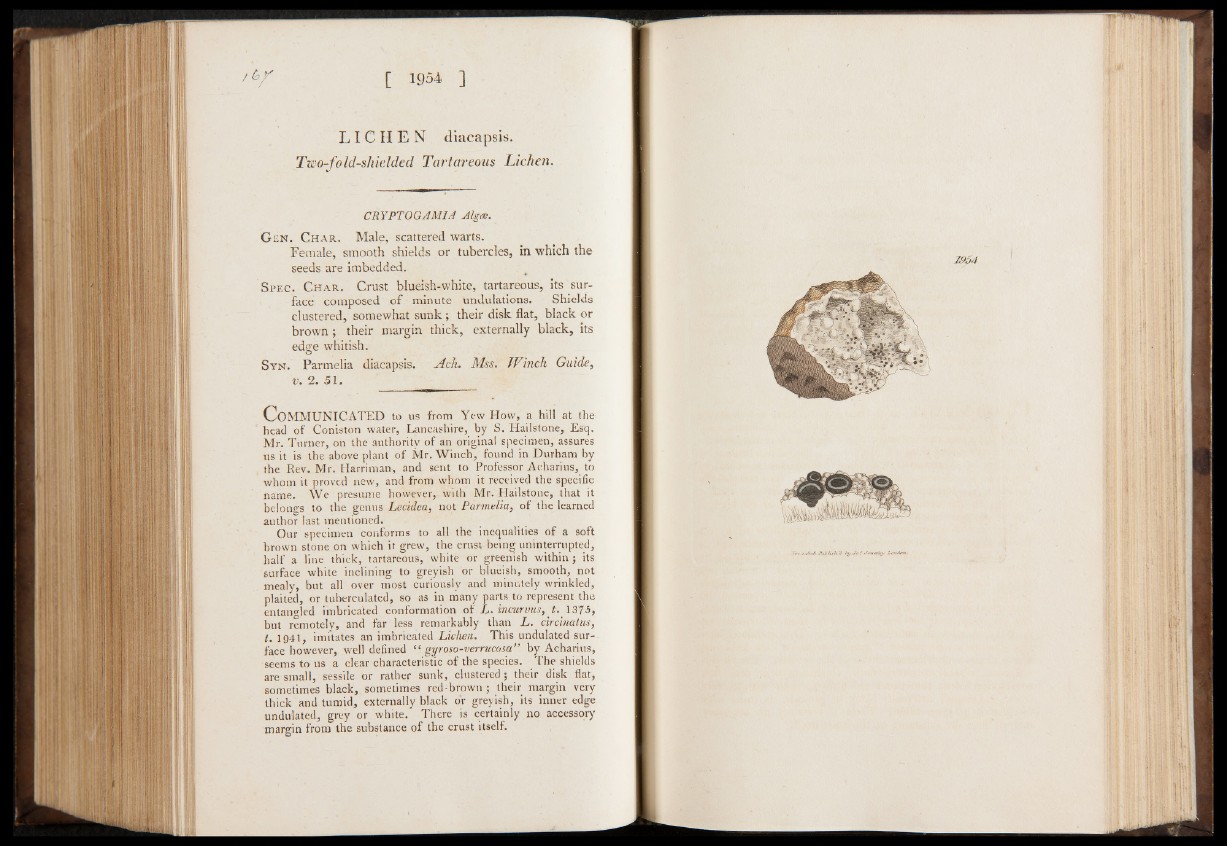
m [ 1954 ]
L I CHE N diacapsis.
Two-folcl-skidded Tartareous Lichen.
CRYPTOGAMIA Alga.
G en. Ch a r . Male, scattered warts.
Female, smooth shields or tubercles, in which the
seeds are imbedded.
Spec. Ch a r . Crust blueish-white, tartareous, its surface
composed of minute undulations. Shields
clustered, somewhat sunk; their disk flat, black or
brown ; their margin thick, externally black, its
edge whitish.
Syn. Parmelia diacapsis. d ch . Mss. Winch Guide,
v. 2. 51,
C o m m u n ic a t e d to us from Yew How, a hill at the
head of Coniston water, Lancashire, by S. Hailstone, Esq.
Mr. Turner, on the authority of an original specimen, assures
us it is the above plant of Mr. Winch, found in Durham by
the Rev. Mr. Harriman-, and sent to Professor Acharius, to
whom it proved new, and from whom it received the specific
name. We presume however, with Mr. Hailstone, that it
belongs to the genus Lecidea, not Parmelia, of the learned
author last mentioned.
Our specimen conforms to all the inequalities of a soft
brown stone on which it grew, the crust being uninterrupted,
half a line thick, tartareous, white or greenish within; its
surface white inclining to greyish or blueish, smooth, not
mealy, but all over most curiously and minutely wrinkled,
plaited, or tuberculated, so as in many parts to represent the
entangled imbricated conformation of L. incurvus, t. 1375,
but remotely, and far less remarkably than L. circinatus,
t. 1941, imitates an imbricated Lichen. This undulated surface
however, well defined “ gyroso-verrucosa” by Acharius,
seems to us a clear characteristic of the species. The shields
are small, sessile or rather sunk, clustered; their disk flat,
sometimes black, sometimes red - brown ; their margin very
thick and tumid, externally black or greyish, its inner edge
undulated, grey or white. There is certainly no accessory
margin from the substance of the crust itself.